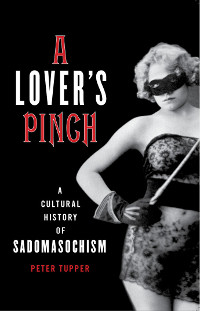
Back in 2004, German novelist Thor Kunkel claimed that he had discovered a secret chapter in the secrets-filled history of pornography: porn produced in Nazi Germany. From UK newspaper The Guardian:
Before submitting his manuscript to his publisher last summer, Kunkel had researched long and hard into one of the most subterranean aspects of the Nazi era – a series of erotic home movies known as the Sachsenwald films, shot secretly in 1941. Officially, pornography was forbidden under the Nazis; in reality, however, the films were not only screened privately for the amusement of senior Nazi figures, but were also traded in north Africa for insect repellent and other commodities.
Kunkel discovered two of the black and white films – the pastoral Desire in the Woods and The Trapper. In one of them, a man ties a naked woman to a tree. Incredibly, Kunkel tracked down the actress some 60 years after her woodland nude scene, living in an old people’s home outside Hamburg. “I found her via a photographer who had known her since she was 14, when she posed for nude photographs,” Kunkel says.
The 83-year-old was slightly taken aback by the novelist’s visit, but agreed to help. She could recall only two “polite, charming men” who approached her outside a tobacconist’s kiosk in Berlin. The men had driven her and her sister in a black Opel Admiral – the saloon car favoured by the Gestapo – to the woods outside Hamburg. There she had disrobed.
“She told me she and her sister had had a threesome with a man. I found this a bit surprising,” Kunkel says. The novelist never did discover who the director of the film was, but he used the movies as the framework for his 622-page manuscript, which his publisher, Rowohlt, had originally lauded as a “packed, minutely researched portrait of morbid Nazi society … and the demise of the Third Reich.”
Kunkel also interviewed 57 elderly German soldiers who had served with Erwin Rommel in north Africa, where much of the novel is set. They confirmed what he already suspected – that during the second world war, the German military traded Nazi pornography with the locals. The Sachsenwald films even ended up in the hands of the Bey of Tunis, a regent with a legendary collection of pornography. “It was the thing the locals were most interested in. In return, the soldiers got food, water and supplies,” Kunkel says.
There seems to be very little about these films, at least in English, and this whole thing might turn out to be a fabrication or exaggeration.


